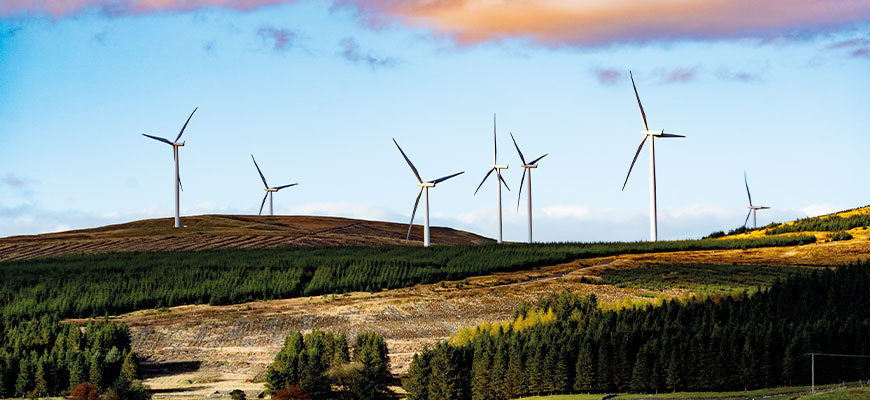Planning: Towards 2045 – the NPF4 roadmap

The Scottish Government published the long-awaited consultation draft of its Fourth National Planning Framework (“NPF4”) on 10 November 2021 (download the PDF).
NPF4 is a spatial plan, essentially a blueprint for land use, development and investment in Scotland. It sets out a plan of action for where and how Scotland should grow and develop to 2045, and provides the key policy direction to assist in achieving net zero sustainable development by that date.
When it is ultimately approved by the Scottish Parliament, NPF4 will form part of the legal “development plan”, meaning that planning decisions should be taken in line with it. It will therefore exert a very significant influence on what is built (or not built, for that matter) and where. It will also exert a profound impact on future local development plans to be produced by all 32 planning authorities.
Structure
NPF4 is an extensive policy document made up of four parts:
- Part 1 sets out the overarching strategy including priorities, spatial principles and action areas.
- Part 2 sets out the proposed “national developments”.
- Part 3 sets out policies for the development and use of land which are intended to be applied in the preparation of local development plans, local place plans, masterplans and briefs, and for deciding a large range of applications.
- Part 4 sets out how the Scottish Government will deliver this strategy.
Principles
Six overarching principles are identified to aid delivery of the national spatial strategy, including “compact growth” to limit urban expansion where brownfield, vacant and derelict land can be used more effectively; “local living” to create networks of 20-minute neighbourhoods; “balanced development” across all of Scotland, enabling more people to live in rural and island areas; “conserving and recycling”; “urban and rural synergy”, bringing together the contributions of cities, towns, villages and countryside areas to achieve shared objectives; and “just transition” to ensure that the transition away from fossil fuels is fair, creating a better future for all.
Action areas
NPF4 splits the country into five “action areas”, each with its own priorities: North and West Coastal Innovation; Northern Revitalisation; North East Transition; Central Urban Transformation; and Southern Sustainability.
National developments
Eighteen national developments that support the spatial strategy are identified, including electricity generation and storage, from renewables of or exceeding 50 megawatts capacity; urban mass/rapid transit networks (in Aberdeen, Edinburgh and Glasgow); and “waterfronts” in Dundee and Edinburgh. Although consent or permission will be needed for these national developments, the “needs case” for them is made out in NPF4.
Housing
With NPF4 being part of the development plan, delivery of housing takes a central role as a matter of national importance. The housing policies stated in NPF4 will play a key role in meeting the targets for new homes coming forward over the next several years, not to mention the tenure of those homes and the quality of build.
Planning policies
NPF4 contains 35 national planning policies against which future planning applications will be assessed. There should be no need for these policies to be repeated in future local development plans, and the expectation is that this should allow for greater consistency and predictability of decision making.
Conflict
While the expectation is that there will be no conflict between NPF4 and future local development plans under s 13 (which is yet to come into force) of the Planning (Scotland) Act 2019, in the event of any incompatibility between a provision of the National Planning Framework and a provision of a local development plan, whichever of them is the later in date is to prevail.
Closing date
The closing date for responses to NPF4 is 31 March 2022.






